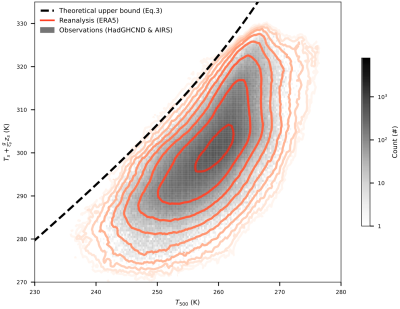How Hot Can Heat Waves Get?
UC Berkeley researchers provide a theory for the upper bound of midlatitude surface temperatures and a physically based rate at which the maximum temperature achieved each year over midlatitude land will change with global warming.
Heatwaves damage societies worldwide and are intensifying with global warming. Several mechanistic drivers of heatwaves, such as atmospheric blocking and soil moisture-atmosphere feedback, are well-known for their ability to raise surface air temperature. However, what limits the maximum surface air temperature in heatwaves remains unclear; this became evident during recent Northern Hemisphere heatwaves, which achieved temperatures far beyond the upper tail of the observed statistical distribution. UC Berkeley researchers obtained evidence for the hypothesis that convective instability limits annual maximum surface air temperatures over midlatitude land and provided a theory for the corresponding upper bound of these temperatures.
UC Berkeley researchers presented evidence for the hypothesis that convective instability limits annual maximum surface air temperatures over midlatitude land. They provided a theory for the corresponding upper bound of midlatitude temperatures, which accurately describes the observed relationship between temperatures at the surface and in the mid-troposphere. They showed that known heatwave drivers shift the position of the atmospheric state in the phase space described by the theory, changing its proximity to the upper bound. This theory suggests that the upper bound for midlatitude TXx should increase 1.9 times as fast as mid-tropospheric temperatures at the time and location of peak surface temperatures. Using empirical mid-tropospheric warming, they project that the upper bound of peak surface temperatures over Northern Hemisphere midlatitude land (40N to 65N) will increase about twice as fast as global mean surface air temperature, and the peak surface temperatures will increase faster than this bound over regions that dry on the hottest days.

